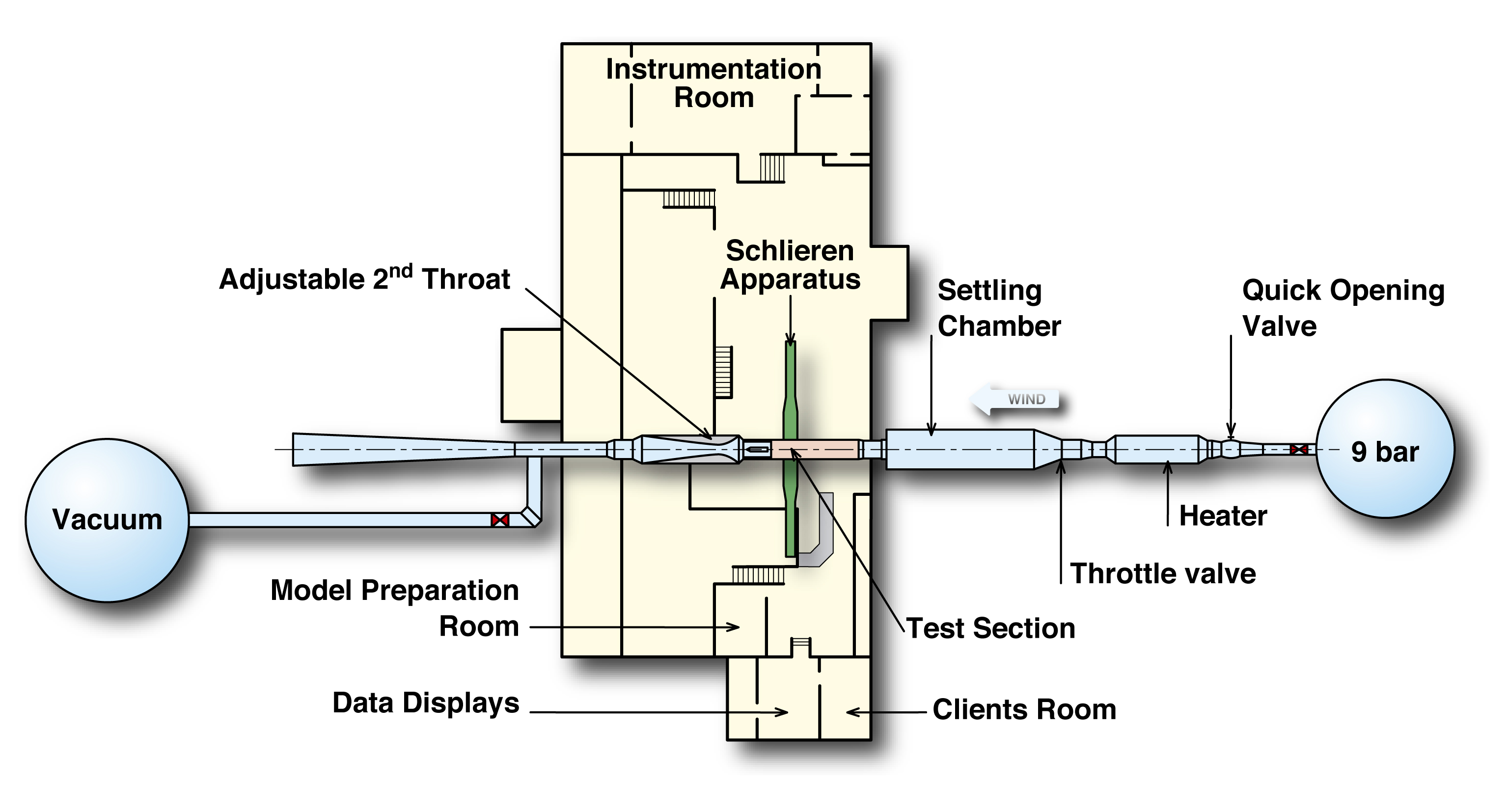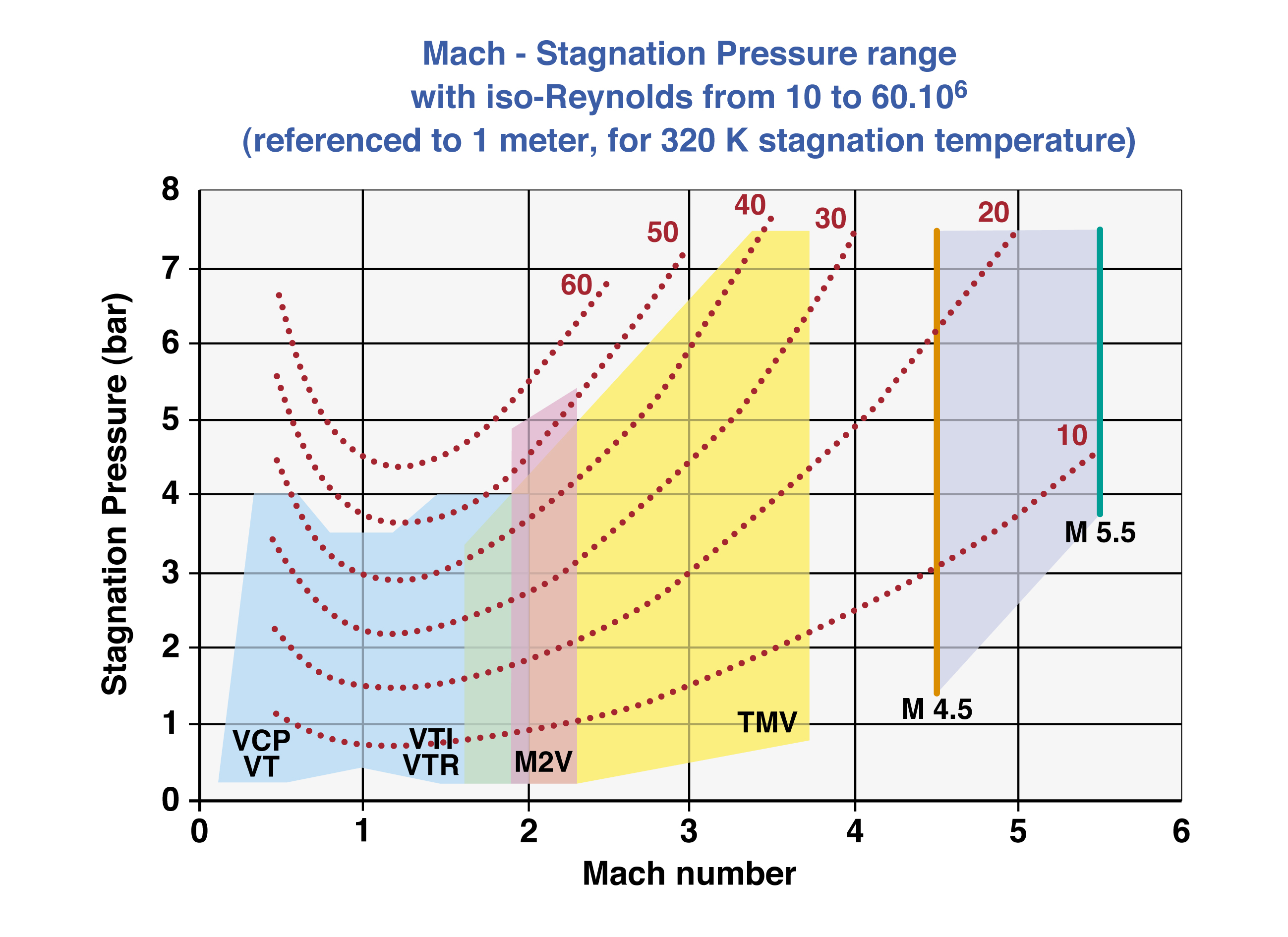Blow down wind tunnel, from Mach 0.1 to Mach 6.05
Rectangular section (0.80 x 0.76 m maximum).
Stagnation pressure: from 0.2 bar to 7.5 bar (depending on nozzle and Mach number).
Stagnation temperature generated by electrical storage heater: maximum 530 K.
MEASUREMENT
- Steady measurements = 64 analog channels, 16 bits A/D converter, digital lowpass filtering with a bandwidth from 0.01 to 10 Hz. Steady accuracy ±1 mV, resolution 0.3mV.
- On demand, unsteady measurements = 64 analog channels at 100 kHz per channel. 12 bits A/D converter, digital lowpass filtering with a bandwidth from 0 to 20 kHz (if necessary the number of channels can be increased).
- Steady pressures = 992 channels (by DTC PSI®, system 8400).
- Automatic quality checks of the voltage measurement units.
- Real-time data processing.
- Model supports and tunnel wall interferences corrections.
- Measurement while one parameter is continuously varying.
Measurement techniques
- Schlieren vizualisation.
- Flow meter for air intake tests.
- Temperature measurement by thermocouples or infrared thermography.
- Load measurement by ONERA 6 component balance and hinge moment balance.
- Laser velocimetry on request.
FEATURES
Run time: from 10 seconds to 15 minutes depending on conditions (10 to 35 seconds with exhaust into vacuum storage tanks; 1 to 15 minutes with exhaust into atmosphere).
- Reynolds number: maximum 54.106 referenced to 1 meter (depending on nozzle and Mach number).
- Clean airflow ensured by 80 µm mesh filter.
- Quick and easy access to model by removal of test section right-hand wall.
- Productivity: 3 to 20 runs or 20 to 40 polars per day, 15 to 50 minutes between runs.
TYPICAL TESTS
- Force and/or pressure measurements on missile models.
- Air intakes (steady and unsteady measurements).
- Models equipped with cold jet (compressed air) or hot jet (rocket engine).
- Optronic systems.
- Radome erosion by rain or sand.
- Airfoil or helicopter blade aerodynamic data.
- Unsteady measurements on pitch oscillating profile model.
- Heat transfer measurements.





